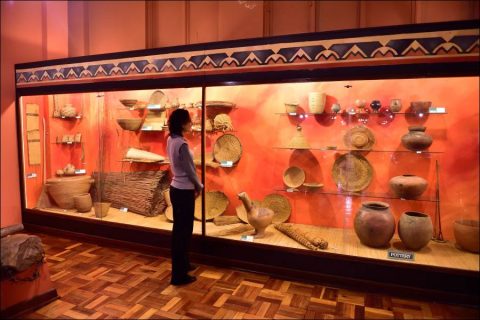Residents of East London tend to mention their museum and the coelacanth in one breath, and with good reason. Established in 1921 and considered to be one of the most interesting natural and cultural history museums in the country, the East London Museum features a number of fine exhibits, including an extensive collection of beadwork relating to the Xhosa-speaking people.
The East London Natural History gallery features the original coelacanth – a prehistoric fish that has lived in the Indian Ocean for 400 million years, thought to be extinct until it was re-discovered in 1938.The discovery of a live coelacanth in the East London harbour was regarded internationally as the most significant zoological find of the century, which makes the East London Museum, open on every day of the year except Christmas day and Good Friday, worth a visit to see this specimen alone.
Of course there are other galleries at the museum. The border gallery gives a fine depiction of the history of the region and includes displays of southern Nguni beadwork and traditional culture; the costume gallery is a fine treat with period settings from the Late Victorian through to the 1930s Art Deco style; and the maritime gallery includes model ships and shipwreck artefacts.
The East London Museum lies in upper Oxford Street. It also serves as the home of the world’s only surviving Dodo egg and a reconstruction of the flightless bird that lived on the island of Mauritius, standing about a metre tall. Thought to be related to pigeons and doves, it has been extinct since the mid-to-late 17th century.
The Nahoon Point Nature Reserve was established in 2004. But, it was in 1964 that the real treasure here was discovered. When two municipal workers took their rest in Bat’s Cave, they noticed human footprints and animal tracks on the roof of the cave, above their heads. They reported this to the East London Museum and it was soon confirmed that they were ancient fossils of the prints of a child, two antelopes and a bird, dating back some 124 000 years (although there remains some dispute regarding this aging).
This means that these are the oldest human footprints in existence, making the entire Nahoon area very important. The roof of this cave has since collapsed, but the rocky slab in which these prints are perfectly preserved is now on display at the East London Museum.
Hits: 316
